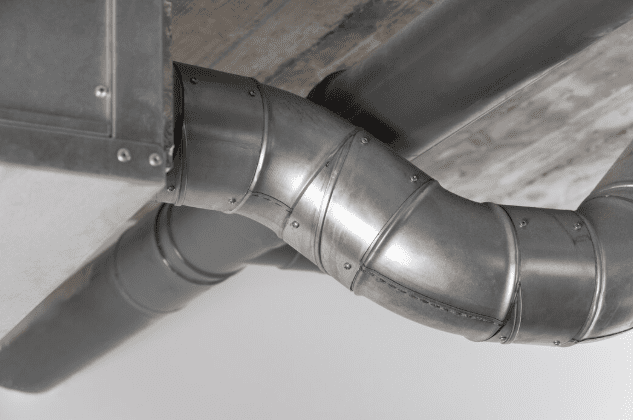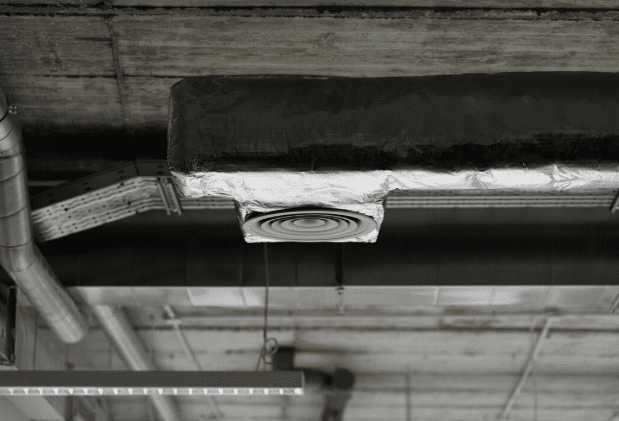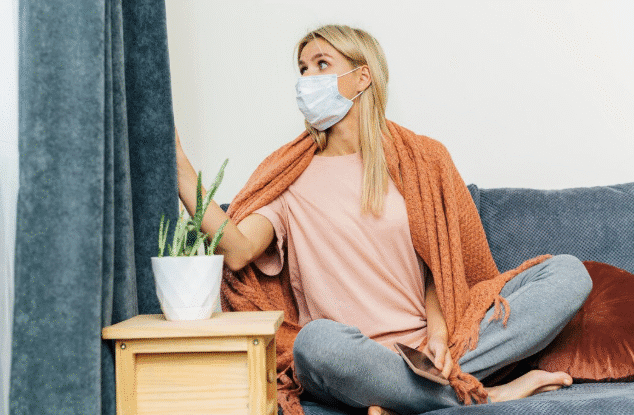Invisible Allergens in HVAC Ducts: Hidden Triggers of Allergies
Let us start with a quick story. The first time we popped a supply register off in a tidy, picture-perfect home, a cloud of ultra-fine dust lifted like smoke. The family kept asking why their eyes burned at night. We traced it to the HVAC. If you have ever wondered about dirty air ducts, you are not imagining it. Small, stubborn particles ride the air every time your system kicks on, and your body feels it before your eyes can see it.
We will pull back the vent cover together. We will show you the five most common invisible culprits, explain how they affect your health, what to look out for, and how to respond. When it is time for deeper work, we will also point you to a trusted local team that lives and breathes this work.
What Invisible Allergen Means
When we say invisible, we mean particles so small you could wipe the grille and still miss them. Dust mites, mold fragments, pet proteins, pollen, and even chemical residues cling to the film inside supply runs and on the blower housing. They build up in dirty air ducts and then burst into the room in tiny spikes every time the blower ramps up. That is why symptoms often flare right when the AC starts.
Allergen 1: Dust Mites and Air Duct Cleaning Allergies
What they are
Microscopic. Persistent. Hungry for skin flakes. Dust mites thrive around 20 to 25 °C and above 50 percent relative humidity. We see their leftovers in elbows, boots, and on coil fins. When that debris dries, a quick blast of airflow turns it airborne. That is where air duct cleaning and allergies meet in real homes.
How they affect you
Their allergenic proteins irritate your nose, eyes, throat, and lungs. Think tickly sneezes, itching, and that heavy head feeling. If you have asthma, even a short exposure spike can be enough to set things off.
Signs you have a problem
Symptoms worsen when the HVAC cycles. Dust rings form around registers even after you clean. Morning congestion becomes routine. Pets and plush fabrics feed the dust reservoir and make it worse.
What helps
Hold humidity between 30 and 50 percent. Wash bedding weekly at 130°F or hotter. Fit a higher MERV filter that your blower can handle and change it on schedule. If debris is visible in the trunks, schedule a professional air duct cleaning before the cooling season.
Allergen 2: Mold Spores and Mildew in Air Ducts

What they are
Mold likes quiet corners, cool metal, and moisture. We find it on the downstream side of coils, in wet drip pans, and in flex air duct runs through hot attics. Spores are tiny, often 1 to 20 micrometers. That is plenty small to ride the air into your bedroom and create classic mold symptoms in the air ducts.
How do they make you sick?
Cough, wheeze, scratchy throat, and stuffy nose are common. Sensitive folks feel it fast. If condensation keeps forming, the growth keeps returning, and symptoms do too.
Technical thresholds
Red flags include visible growth on hard air duct surfaces, musty odor at startup, and indoor counts that feel worse than outside air. Whenever air duct surface temperature dips below the indoor dew point, condensation fuels new spores.
What to do
Fix water sources first. Make sure the pan drains, the trap holds water, and the insulation is intact on cold runs. Clean and sanitize affected surfaces with HVAC-appropriate products, then control humidity so the problem does not return.
Allergen 3: Pet Dander, Animal Proteins, and Air Duct Cleaning Allergies
What they are
We love pets, but their proteins are sticky. They cling to air duct liners and seam edges. Even homes with one tidy cat or dog can load up over a season. That is why a good plan for air duct cleaning allergies often starts with pet routines and ends with the HVAC.
Impact on health
If you are sensitive, you know the drill. Itchy eyes, sneezing, and a tight chest when the blower kicks on. Tiny proteins re-aerosolize easily from a dusty film.
Signs
Pet odor lingers even after upholstery cleaning. Fine, tan dust reappears quickly on registers. Symptoms ease when you spend a few days away, then flare on the first night back.
What helps
Groom outdoors when possible. Keep pets off bedroom supply paths. Use a HEPA vacuum and wash pet bedding frequently. Upgrade filters and, if the air duct film is obvious, book a proper interior clean of trunks, branches, and the air handler.
Allergen 4: Pollen, Outdoor Dust, and Bad Air Quality Allergies
What they are
Spring and fall are notorious. Pollen granules hitch a ride through doors and on clothes, then nest in return paths. Construction dust and traffic particles slip in through leaks. Fresh paint and new furniture off-gas vapors that bind to indoor dust. If you keep asking Can bad air quality cause allergies, the short answer is yes, especially when these hitchhikers ride your HVAC loop.
Health impacts
Pollen sparks seasonal sneezes and itchy eyes. Chemical vapors add headaches and throat burn. Every time the system starts, a puff of that mix moves into living spaces.
Signs
Windows stay closed, yet spring allergies rage indoors. A faint chemical smell lingers after cleaning days. Your throat calms down outside but gets scratchy again after an hour on the couch.
What helps
Ventilate during projects. Choose low VOC products. Seal return leaks and ensure a snug filter fit so bypass dust does not sneak around the frame. Use a filter that captures pollen effectively and change it on time.
Allergen 5: Insect and Rodent Proteins with Allergy Focus
What they are
Cockroach, mouse, and rat residues dry into fine particles, often under 15 micrometers. We have found them under floor returns and in older basements with open chases. These proteins are potent triggers, which is why targeted air duct cleaning for allergies matters after you have handled the pests themselves.
How do they hurt you?
They aggravate asthma, stuff up sinuses, and create a stubborn, sour odor. If residues stay on interior surfaces, symptoms can persist long after the critters are gone.
Signs
Unpleasant odors near vents or returns. Specks or smears around seams and boots. Respiratory symptoms that do not improve even after you address pets and visible mold.
What helps
Seal entry points and remove food sources. Have a pro inspect with a camera, clean, and sanitize the interior surfaces, registers, and the air handler cabinet. Use only products designed for HVAC materials.
How These Allergens Create Real Problems and Why Air Duct Cleaning Helps

Airflow drives the story. When interior films thicken, airflow drops, run time increases, and more particles get lifted into rooms. Most allergen particles live in the 1 to 20 micrometer range. They are perfectly sized to ride the central airstream and settle again inside the air duct skin. Moisture in hot attics or cool basements accelerates growth. Breaking that cycle is the core of why air duct cleaning helps you breathe easier.
Book Professional Help Now: Breathe Easier with Proven Air Duct System Cleaning
Do not let hidden allergens steal your comfort. If these signs look familiar, schedule a full inspection and cleaning with Mighty Ducts of Texas. Our team will remove dust mites, mold, pet dander, and pest residues, then help you dial in filters, humidity, and maintenance so the air stays clean. Book your service today at Mighty Ducts of Texas and take back your indoor air.

